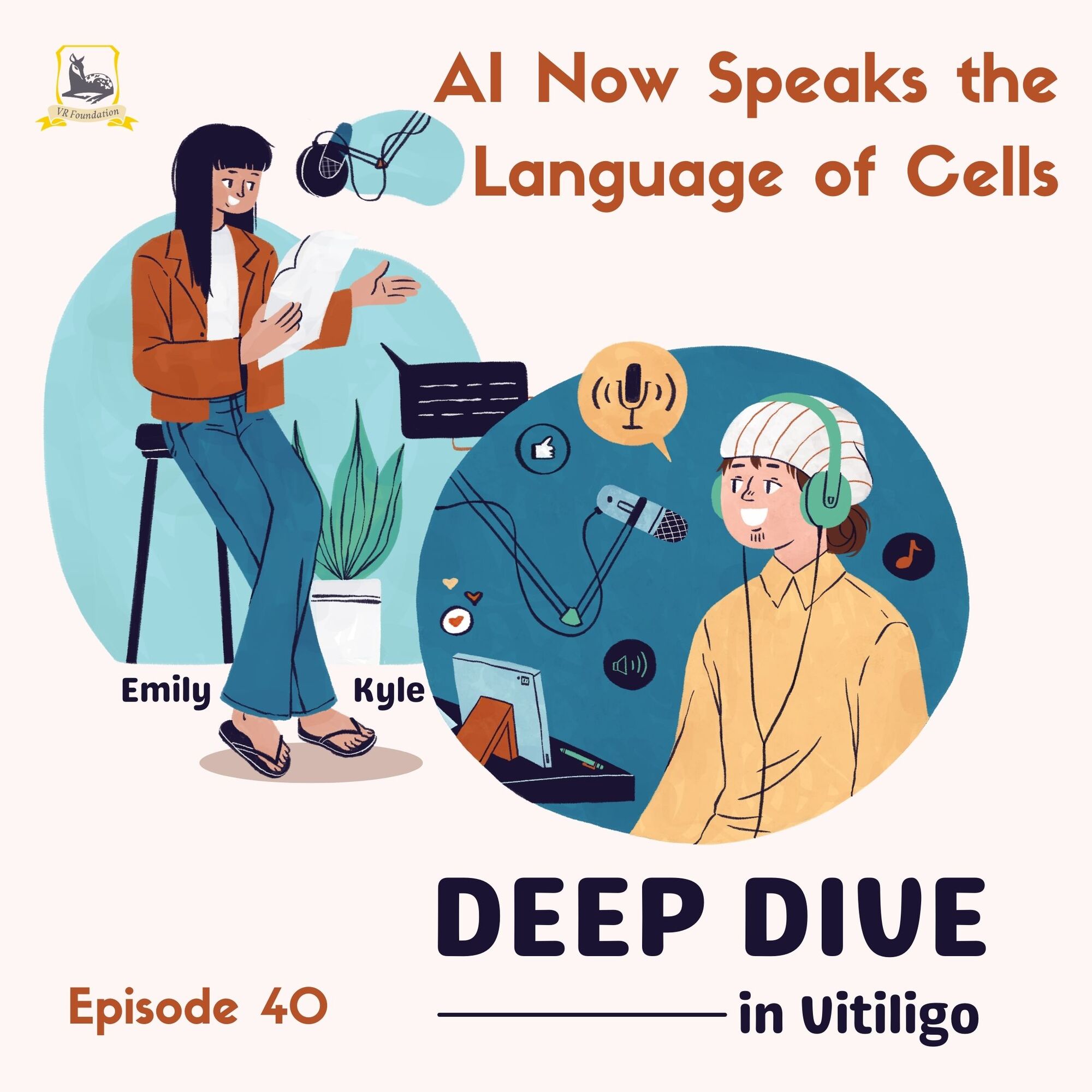Our work is entirely funded by private donations – we receive no money from government. Your money will help us continue funding research into vitiligo and supporting people affected by the condition.
Podcast
AI Now Speaks the Language of Cells (Ep. 40)
Can an AI “talk” to cells? Yes—sort of.
This over-the-horizon episode spotlights a breakthrough open model family that turns single-cell RNA-seq into readable “cell sentences,” unlocking plain English Q&A, fast summaries, and even simulations of cell responses to drugs or edits.
Think of it as the next chapter after our vitiligo.ai experiments — a glimpse at making biology a conversation everyone can join.


FAQOther Questions
- Who is prone to vitiligo?
Vitiligo can affect anyone, regardless of gender, age, or race. Vitiligo prevalence is between 0.76% and 1.11% of the U.S. population, including around 40% of those with the con...
- Awareness Days Similar to World Vitiligo Day
World Vitiligo Day, celebrated annually on June 25 since 2012, is a significant event dedicated to raising awareness about vitiligo and supporting those affected by the conditio...
- How smoking affects vitiligo?
Smoking is a common habit linked to numerous health risks, affecting multiple body systems and increasing various disease risks, including respiratory and cardiovascular issues....
Though it is not always easy to treat vitiligo, there is much to be gained by clearly understanding the diagnosis, the future implications, treatment options and their outcomes.
Many people deal with vitiligo while remaining in the public eye, maintaining a positive outlook, and having a successful career.
Copyright (C) Bodolóczki JúliaBy taking a little time to fill in the anonymous questionnaire, you can help researchers better understand and fight vitiligo.